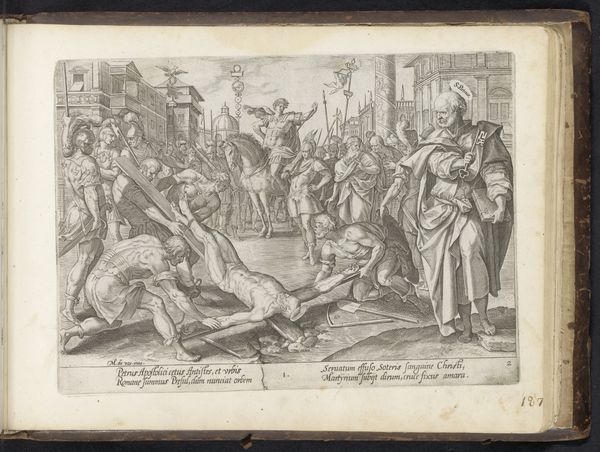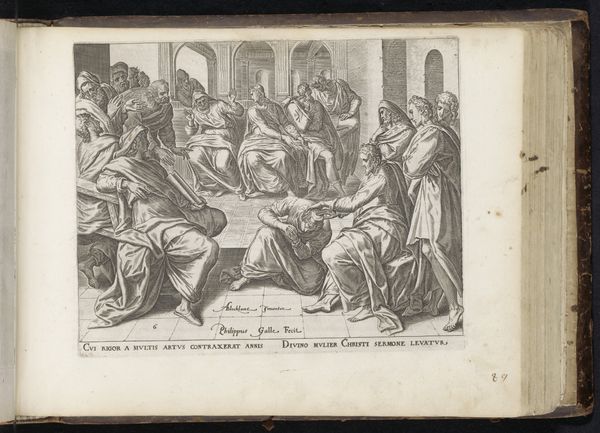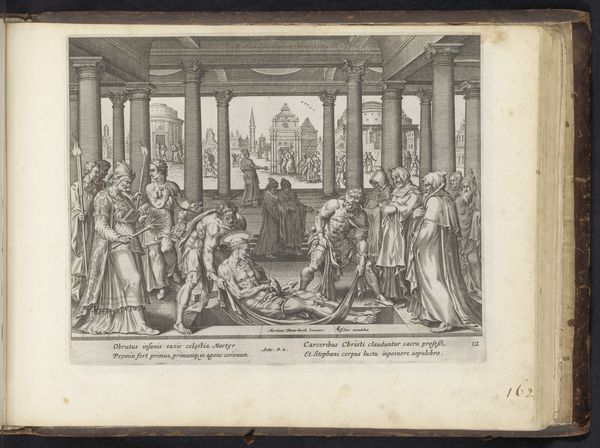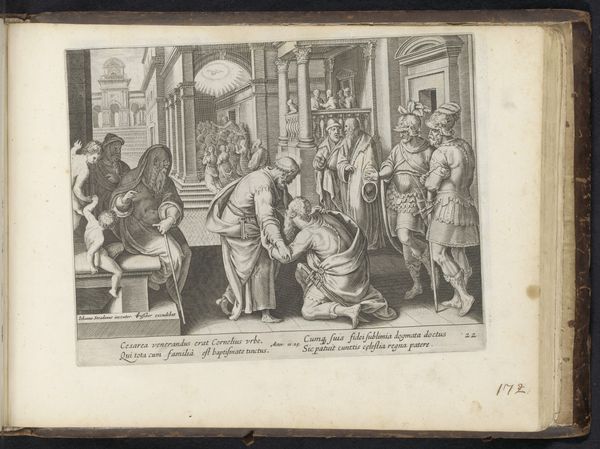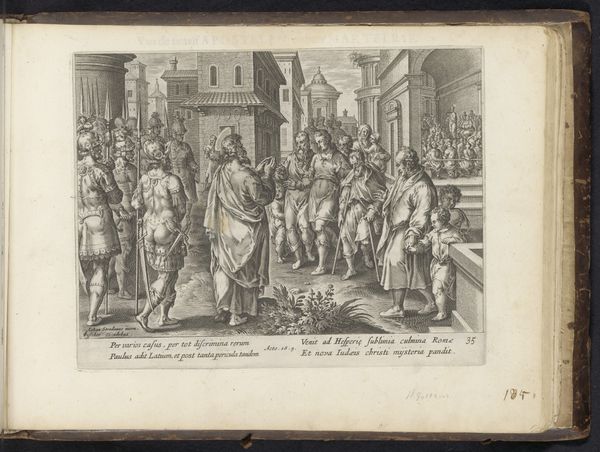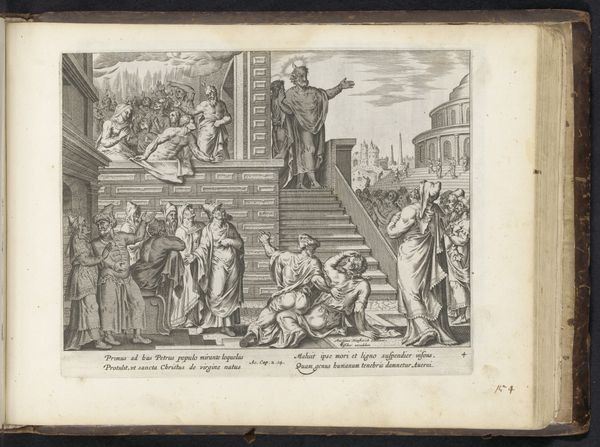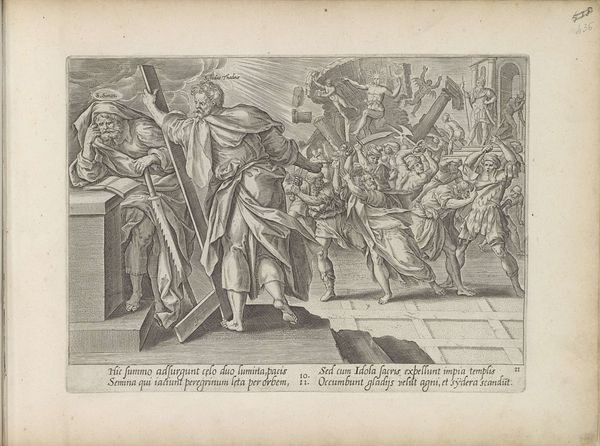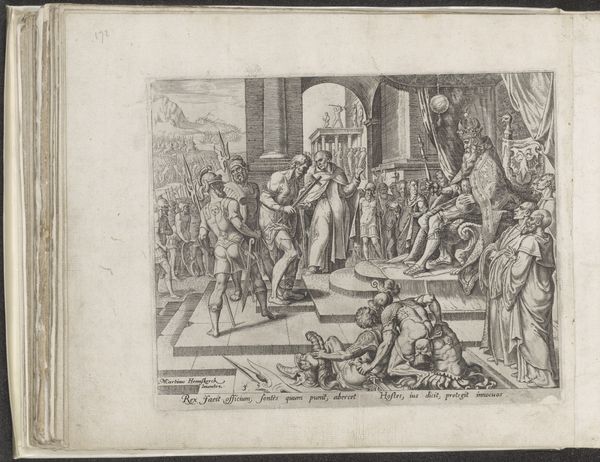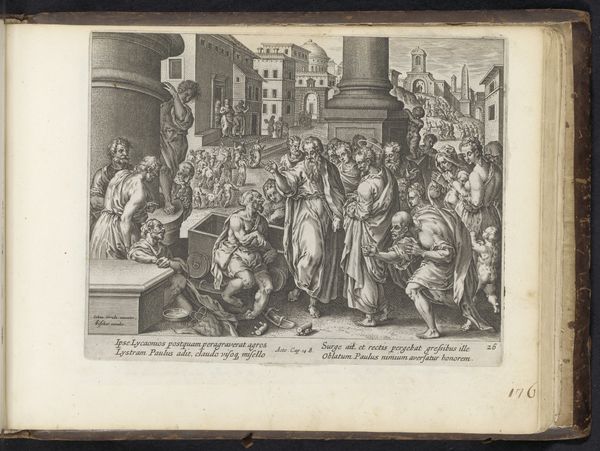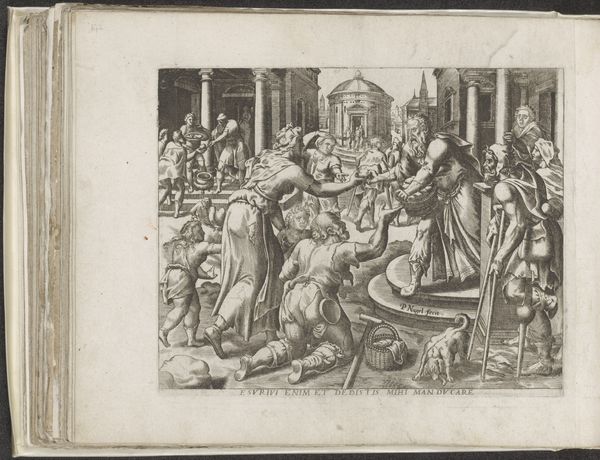
print, engraving
#
narrative-art
#
baroque
# print
#
figuration
#
history-painting
#
engraving
Dimensions: height 210 mm, width 291 mm
Copyright: Rijks Museum: Open Domain
Curator: Here we have Hendrick Goltzius's "Martyrdom of Paul," dating from sometime between 1576 and 1646. It's an engraving currently residing in the Rijksmuseum. Editor: My initial impression is one of dramatic chaos, albeit meticulously rendered. The composition, with its crowded figures and stark lines, seems designed to evoke a sense of both brutality and almost classical order. Curator: Absolutely. Goltzius masterfully utilizes the engraving technique to create a highly detailed scene. Notice the contrasting textures, from the smoothness of the skin to the rough fabrics, achieved through varying the density and direction of the lines. It demonstrates a high degree of technical virtuosity. Editor: From a historical vantage, it reflects the pervasive use of art as propaganda during that period. Religious martyrdom was a potent subject, used to reinforce faith and moral behavior and demonstrate the power of Rome. What I see in this work is a reinforcement of both Christian belief and power dynamics. Curator: Yes, and consider how Goltzius structures the narrative. The figure of Paul being beheaded is centrally located. What does that evoke, in terms of symbolism? Editor: It directs our gaze immediately to the spectacle of martyrdom and invites viewers to align with the sacrifice of the Christian leader. In that moment, Paul goes from being human to symbolic. What else do you read in it? Curator: The stoic expressions on some of the observing figures contribute to a sense of detached cruelty. They are witnesses to the barbarity, making them responsible to interpret the sacrifice of a saint and reflect on themselves. Editor: I'd like to add the way Goltzius uses perspective. The architecture and arrangement of figures creates a strong spatial recession that adds to the theatrical feel. Curator: This close inspection makes me appreciate again how artists of this time approached classical history in relation to the ongoing religious shifts and power consolidations they lived through. Editor: Agreed. Examining these works reminds us to seek multiple perspectives that give rise to more holistic impressions about our own time and cultures.
Comments
No comments
Be the first to comment and join the conversation on the ultimate creative platform.
